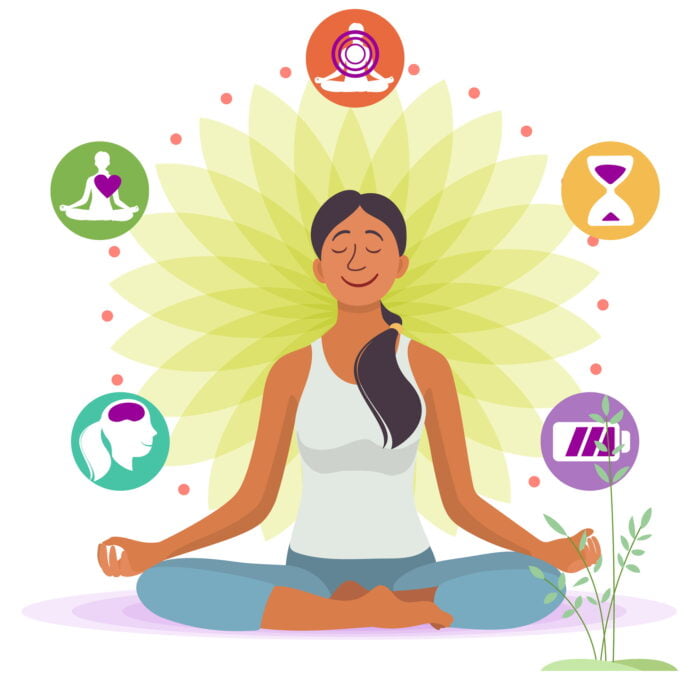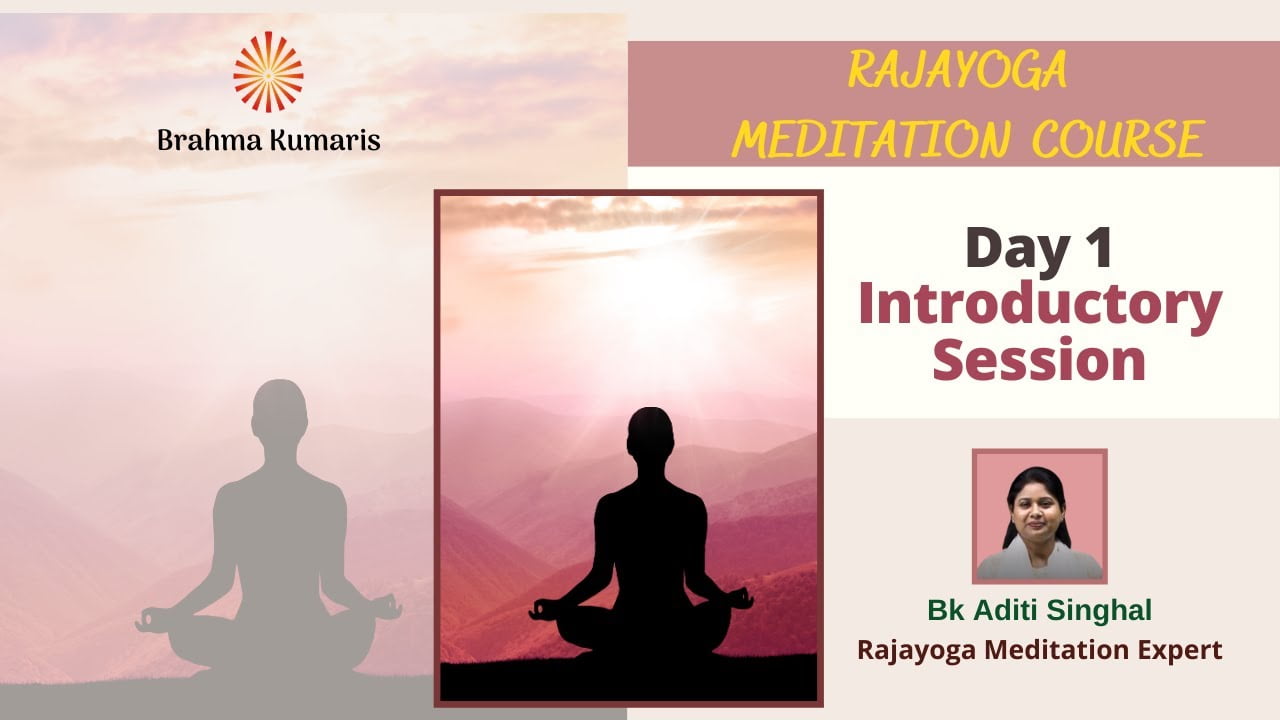Meditation
What is meditation?
Meditation is the process of empowering and recharging the mind by channelizing our thoughts in the right direction while being in touch with our higher consciousness. Meditation helps us to gain control over the things that can be brought under our control, rather than becoming anxious and worrying about controlling everything in our complex world. That redirection is what increases our focus, because we are no longer wasting our energy and time in trying to control things that cannot be controlled.
The process of meditation not only helps the mind to relax by reducing the number of thoughts but also leads to attitudinal change by cleansing all negative and wasteful thoughts. It helps in consciously creating positive thoughts about the self and others, thereby elevating the quality of thoughts.

Negative rumination removes our focus from our work and increases our anxiety and fear. Meditation, which involves heightened awareness of the present moment, involves attending to your thoughts intentionally and nonjudgmentally. It helps reduce negative rumination and promotes positive self-reflection, which in turn reduces anxiety and improves focus.
How to Meditate?
There are different types of meditation. Here we would like to share the techniques of Rajayoga meditation which we have been practising for many years. We have experienced profound positive changes in our ways of thinking, and in our beliefs and perceptions, our ways of seeing others and our work efficiency. In Rajayoga meditation, we particularly aim to: Think Less, Think Slow and Think Better.
For that, we constantly try to keep a check on our thoughts, which precede the words we speak and actions we perform. So, paying attention to the self at the thought level, where a lot of chaos originates very subtly is an important step in meditation. By keeping a constant check on our minds, we consciously choose to dispel our negative, wasteful thoughts, and create positive, empowering thoughts, thereby changing our feelings and experiences in any given situation.
In meditation, we not only create positive thoughts in mind, but also visualize them using our intellect and try to be in that state of mind experiencing the positive visualizations. Thus, our mental and intellectual faculties work together, yielding better concentration.
In simple words, meditation can be described as a three-step process: Check, Choose and Change.
Meditation Practice
Sit in a comfortable position with the back straight. You can either sit on a cushion on the floor cross-legged or, if this is uncomfortable, sit on a chair. Choose a quiet place away from noise or visual distraction. Gentle background music can be played, as this helps to create a relaxed atmosphere. If you wish, you could read over the following practice thoughts slowly and silently. Aim to experience and visualize the words in your mind so that you begin to feel what is being described.
Thoughts for Meditating
Nothing exists outside this room . . .
I am feeling completely isolated from the outside world and free to explore my inner world . . .
I am turning all my attention inward, concentrating my thoughts and energies on the centre of my forehead . . .
I am becoming aware of the stillness around me and within me . . .
A feeling of natural peacefulness is beginning to spread over me . . .
Waves of peace are gently washing over me, removing any restlessness and tensions from my mind . . .
I am concentrating on this feeling of deep peace . . .
Just peace . . .
I . . . am . . . peace . . .
Peace is my true state of being . . .
My mind is becoming very calm and clear . . .
I am feeling relaxed and content . . . having returned to my natural consciousness of peace . . .
I shall sit for a while, enjoying this feeling of calmness and serenity . . .
Practise repeating this or similar thoughts to yourself for about ten minutes, at least two times a day.


